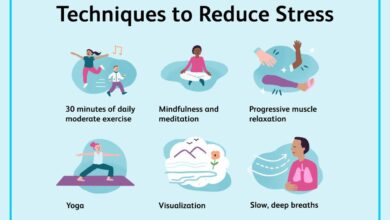
8 Great Things About Exercising at Lunch
8 Great Things About Exercising at Lunch – Who knew that squeezing in a workout during your lunch break could be so beneficial? It’s not just about staying fit; it’s about unlocking a world of positive changes that can transform your entire workday and beyond.
From boosting energy and focus to reducing stress and anxiety, the advantages of lunchtime exercise are far-reaching and surprisingly impactful.
Imagine stepping away from your desk, feeling the sun on your face, and getting your heart rate up. That short burst of activity can make a world of difference. It can help you feel refreshed, invigorated, and ready to tackle the rest of your day with renewed focus and enthusiasm.
Whether you’re a seasoned athlete or just starting your fitness journey, incorporating exercise into your lunch break is a simple yet powerful way to invest in your well-being.
Improving Productivity and Creativity

Ever felt like your brain is stuck in a rut? Exercise can be the key to unlocking your potential and boosting your productivity and creativity. It’s not just about physical fitness; it’s about enhancing your cognitive performance and giving your mind the energy it needs to thrive.
Benefits of Exercise for Productivity and Creativity
Exercise has a remarkable impact on our cognitive abilities. Studies have shown that regular physical activity can improve focus, memory, and problem-solving skills, all of which are crucial for productivity and creativity.
- Increased Blood Flow and Oxygen to the Brain:Exercise stimulates blood flow to the brain, delivering vital oxygen and nutrients that support cognitive function. This enhanced blood flow promotes the growth of new brain cells, contributing to improved memory and learning abilities.
- Stress Reduction:Physical activity acts as a natural stress reliever. When we exercise, our bodies release endorphins, which have mood-boosting and stress-reducing effects. By reducing stress, exercise helps us think more clearly and creatively.
- Improved Sleep Quality:Exercise can significantly improve sleep quality, leading to better cognitive function and increased productivity the next day. A well-rested mind is more alert, focused, and capable of creative thinking.
Examples of Studies
Several studies have demonstrated the positive effects of exercise on productivity and creativity.
- A study published in the journal “Psychonomic Bulletin & Review”found that participants who engaged in moderate-intensity exercise for 30 minutes showed significant improvements in both cognitive function and creativity compared to those who did not exercise.
- Another study published in the “Journal of Applied Physiology”revealed that regular aerobic exercise can enhance executive function, which is the ability to plan, organize, and manage time effectively.
Strategies for Incorporating Exercise into a Workday, 8 great things about exercising at lunch
Incorporating exercise into your workday doesn’t have to be a major overhaul. Even small bursts of activity can make a big difference.
- Take Walking Breaks:Instead of sitting at your desk all day, take short walking breaks every hour. This can help improve blood flow, reduce stress, and boost your energy levels.
- Use a Standing Desk:Switching between sitting and standing throughout the day can promote better posture, increase calorie expenditure, and enhance focus.
- Join a Fitness Challenge:Participating in a workplace fitness challenge can motivate you to be more active and encourage healthy competition among colleagues.
Final Conclusion: 8 Great Things About Exercising At Lunch

So, the next time you’re feeling sluggish or stressed, remember the power of a lunchtime workout. It’s a small investment that can yield big rewards. By making exercise a regular part of your workday, you’ll not only be taking care of your physical health but also enhancing your mental well-being, boosting your productivity, and creating a positive habit that can last a lifetime.
It’s a win-win situation, and your body and mind will thank you for it!
Lunchtime workouts are a great way to boost energy levels and improve focus in the afternoon. Plus, they help you stay on track with your fitness goals without sacrificing precious weekend time. Of course, even the most dedicated fitness enthusiast needs a break, which is where recovery days come in.
To learn more about the benefits of rest and recovery, check out this article on 5 great things about recovery days. After a well-deserved rest, you’ll be ready to tackle your next lunchtime workout with renewed vigor!
Let’s face it, sometimes the thought of hitting the gym after a long day at work is the last thing you want to do. But squeezing in a workout during your lunch break can be a game-changer! Not only does it boost your energy levels and help you manage stress, but it can also be a great way to shed those extra pounds.
And if you’re wondering if lifting weights can help you lose fat, you’re not alone. Many people are curious about the link between strength training and fat loss, and there’s a lot of information available online, like this article on can lifting weights help you lose fat.
Ultimately, finding the right workout routine for you is key, and a quick lunch break workout can be a fantastic way to get started.
Taking a midday workout break is a fantastic way to boost energy levels and combat afternoon slumps. It’s also a great opportunity to make healthier choices throughout the day, including your snacks. If you find yourself craving something sweet, consider exploring these 8 easy sugar swaps for a healthier alternative.
After a quick and refreshing workout, you’ll be ready to tackle the rest of your workday with renewed focus and a positive mindset.






